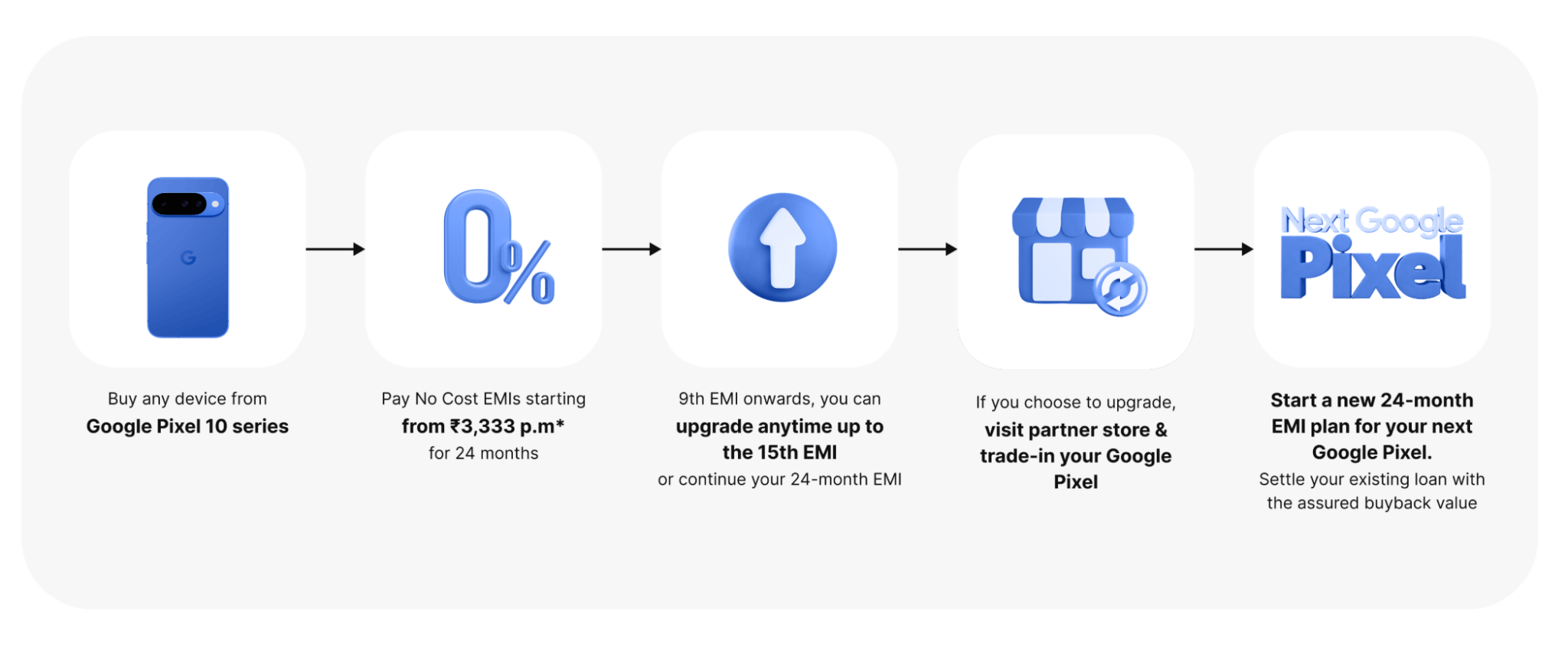The digital world holds its breath as Google’s experimental “Deep Think” update for its Gemini 2.5 Pro model moves closer to a public release. Teased during the recent Google I/O 2025, this feature is poised to mark a significant step forward in artificial intelligence, promising an enhanced reasoning mode designed to handle some of the most intricate problems faced by modern computational systems.
Key Takeaways:
- The “Deep Think” update for Gemini 2.5 Pro is an enhanced reasoning mode.
- It was officially teased at Google I/O 2025, with an imminent public release expected.
- Deep Think aims to significantly improve Gemini 2.5 Pro’s ability to tackle complex problems.
- This feature builds upon the Gemini 2.5 series’ existing “thinking process” capabilities.
- Initial access to “Deep Think” may be for Ultra-tier users first, though this remains unconfirmed.
- The update allows the model to reason through its thoughts before providing responses, leading to enhanced accuracy.
- It introduces “thought summaries,” offering insights into the model’s internal reasoning for developers.
- “Thinking budgets” will allow developers to control the processing depth and associated costs.
This upcoming update represents a strategic move by Google to expand the capabilities of its Gemini models, which are already known for their multimodal understanding and extensive context windows. The core promise of “Deep Think” lies in its ability to allow the AI to engage in a more profound internal “thinking process” before generating responses, mirroring a more deliberate, human-like approach to problem-solving.
The Genesis of Deeper Thought: Understanding Gemini’s Evolution Google’s Gemini series, a family of large language models, has rapidly progressed since its introduction. Gemini 2.5 Pro, a cornerstone of this family, has already established itself as a robust model, particularly adept at handling coding tasks and complex prompts. Its existing capabilities include a massive 1,048,576 input token limit and a 65,536 output token limit, supporting various data types such as text, images, audio, and video. It also supports features like code execution, function calling, and search grounding.
The concept of a model “thinking” before responding is not entirely new to the Gemini 2.5 series. These models already possess an internal reasoning process that aids in multi-step planning and problem resolution. However, “Deep Think” elevates this process, making it more explicit and controllable. It represents a more mature application of the model’s capacity to internalize and process information, moving beyond mere pattern recognition to a more structured, analytical approach.
To appreciate the significance of “Deep Think,” it helps to consider the evolution of AI reasoning. Early AI systems operated on rule-based logic or pattern matching, offering responses based on pre-defined parameters. As machine learning matured, models gained the ability to learn from vast datasets, identifying correlations and generating outputs that often appeared intelligent. However, true “reasoning” – the ability to break down complex problems, explore multiple pathways, and synthesize information into a coherent solution – has remained a considerable challenge.
“Deep Think” directly addresses this challenge. By allowing the model to allocate a dedicated “thinking budget” – a specified range of tokens for internal computation – developers can guide the AI to spend more time deliberating on intricate problems. For Gemini 2.5 Pro, this budget can range from 128 to 32,768 tokens, indicating a wide spectrum of processing depth. A higher budget suggests a more thorough internal analysis, potentially leading to more accurate and nuanced outcomes for highly complex tasks such as advanced mathematics or detailed data analysis.
What “Deep Think” Promises: Beyond Surface-Level Responses The primary objective of “Deep Think” is to boost performance and accuracy by enabling Gemini 2.5 Pro to engage in more sophisticated reasoning. This is particularly relevant for tasks requiring multiple steps, logical deductions, or the synthesis of disparate information.
Consider a scenario where an AI is asked to generate a complex piece of code for a web application. Without “Deep Think,” the model might generate code based on common patterns it has learned, potentially missing subtle dependencies or optimal architectural choices. With “Deep Think,” the model can simulate various coding approaches internally, evaluate their feasibility, and then produce a more robust and efficient solution. Google DeepMind has already showcased Gemini 2.5 Pro’s capabilities in creating interactive simulations and advanced coding, suggesting a foundation that “Deep Think” will significantly build upon.
Another notable feature accompanying “Deep Think” is the introduction of “thought summaries.” This experimental feature provides a window into the AI’s internal reasoning process. For developers and researchers, this transparency is invaluable. It allows them to understand how the model arrived at a particular conclusion, aiding in debugging, fine-tuning, and identifying potential biases or errors in the AI’s logic. This can be especially useful in longer, more involved tasks, where a step-by-step understanding of the AI’s “thought” can build greater trust and facilitate human oversight.
The ability to set “thinking budgets” also offers practical benefits. For routine or straightforward queries, a lower thinking budget can conserve computational resources and reduce latency. For critical or highly complex tasks, a higher budget can be allocated, ensuring the model dedicates sufficient internal processing power to arrive at the most accurate solution. This granular control allows for more efficient and cost-effective deployment of the AI in various applications.
Public Availability and Speculation While the public release of “Deep Think” is imminent, an official confirmed date has not been announced. Google’s typical phased rollout approach might see this feature first available to specific user groups. There is speculation that “Deep Think” might initially be limited to users with Ultra-tier access to Google’s AI services. This would align with a strategy of offering advanced capabilities to premium users before a wider release, allowing for further testing and refinement in a controlled environment.
The general availability of Gemini 2.5 Flash in Vertex AI in early June 2025, followed by Gemini 2.5 Pro, provides a timeline against which the “Deep Think” update is likely to fall. As of June 5, 2025, the gemini-2.5-pro-preview-06-05 model version is available in public preview via Vertex AI, indicating Google’s continuous work on the 2.5 series. The presence of “thinking” capabilities in the Gemini API documentation, with includeThoughts and thinkingBudget parameters, further indicates that the underlying infrastructure for “Deep Think” is already in place for developers.
The Broader Impact: AI in the Real World The progression of AI reasoning, as exemplified by “Deep Think,” has widespread implications across various sectors. In scientific research, it could accelerate discovery by allowing AI to analyze complex experimental data, propose hypotheses, and even design new experiments with greater analytical depth. In fields like finance, AI could provide more nuanced market analysis and risk assessments by considering a wider array of interconnected factors. For everyday users, more intelligent models could lead to more helpful and accurate responses from AI assistants, improved content generation, and better-performing applications.
Google’s commitment to responsible AI development plays a crucial role in the deployment of such advanced features. The company emphasizes a framework for designing, building, and evaluating AI models responsibly, focusing on safety, fairness, and factual accuracy. Tools like the LLM Comparator and SynthID Text are part of Google’s effort to ensure that AI capabilities are introduced with appropriate safeguards and transparency. The ability to generate “thought summaries” aligns with this commitment, offering a level of explainability for the AI’s reasoning, which is vital for building trust and accountability.
As the “Deep Think” update nears its full release, it represents more than just a new feature; it is a signal of the ongoing push towards more sophisticated and capable artificial intelligence. This advancement holds the promise of unlocking new applications and solving problems that were previously beyond the reach of AI, pushing the boundaries of what these systems can achieve.
FAQ Q1: What exactly is “Deep Think” in Gemini 2.5 Pro?
A1: “Deep Think” is an enhanced reasoning mode for Google’s Gemini 2.5 Pro model. It allows the AI to perform a more thorough and deliberate internal “thinking process” before generating responses, which leads to improved performance and accuracy on complex tasks.
Q2: When will “Deep Think” be available to the public?
A2: While no specific public release date has been confirmed, Google teased “Deep Think” at Google I/O 2025, and signs point to an imminent launch. It might initially be available to Ultra-tier users.
Q3: How does “Deep Think” differ from the existing capabilities of Gemini 2.5 Pro?
A3: Gemini 2.5 Pro already has a “thinking process,” but “Deep Think” significantly enhances this. It introduces “thinking budgets” for developers to control the depth of reasoning, and “thought summaries” to provide insight into the AI’s internal process, making the reasoning more explicit and controllable.
Q4: Can developers control how much “thinking” the AI does?
A4: Yes, with “thinking budgets,” developers can set the amount of internal processing (measured in tokens) that Gemini 2.5 Pro uses for a given task. This allows for optimization of resources based on the complexity of the query. For Gemini 2.5 Pro, the budget can be set between 128 and 32,768 tokens.
Q5: What are “thought summaries” and why are they important?
A5: “Thought summaries” are an experimental feature that provides a glimpse into the AI’s internal reasoning steps. They are important because they offer transparency into how the model arrived at its conclusions, aiding developers in understanding, debugging, and trusting the AI’s output, especially for complex problems.
Q6: What kind of tasks will “Deep Think” benefit most?
A6: “Deep Think” will primarily benefit complex tasks that require multi-step planning, logical deductions, advanced coding, data analysis, and the synthesis of large amounts of information, where a deeper internal processing can lead to more accurate and robust results.



















